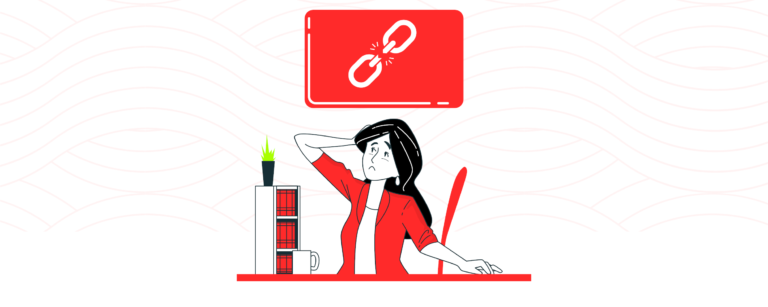10 Tips To Earn High-Quality Contextual Backlinks in 2025
Contextual backlinks are crucial in improving your website’s visibility and authority. Also, Google is dedicated to providing the best experience for its users and ensures the links people see are relevant to their search. No matter how useful its content may be, a site without links is far less likely to rank highly in organic search results.
Therefore, 38.43% of businesses spend on link building to gain authority backlinks. Also, getting lots of contextual backlinks pointing to your website is probably the most effective way to boost your ranking on search engines. This blog post is packed with tips to earn contextual backlinks, its importance and how to measure its impact.
Why are Contextual Backlinks Important?
Contextual backlinks are placed within the relevant content, rather than appearing outside of the main body such as in author bios, headers, footers, captions, and site directories. They include relevance, authority, and value. On the other hand, non-contextual backlinks solely refer to your page.
Building trust is more important than “merely earning links”, as Google prioritizes E-A-T (Expertise, Authority, Trustworthiness). So you need to start using smart strategies that deliver results, not penalties.
Contextual Backlinks VS. Non-Contextual Backlinks
| Definition | Relevance | User Engagement | Reliability | |
| Contextual Backlinks | These links are placed within relevant, high-quality content that naturally aligns with the context of the surrounding text. | Highly relevant to the topic, boosts authority and SEO value. | Attract clicks as they provide additional, contextually relevant information to the reader. | Enhance trustworthiness as they are naturally integrated into authoritative content. |
| Non-Contextual Backlinks | Links placed outside the main content, often in sidebars, footers, or directories, with little to no relevance to the content. | These links lack thematic alignment, offering weaker signals of authority. | Unlikely to attract clicks due to placement in less visible areas. | These are mostly spammy, especially if overused or from low-quality sources. |
Why Do You Need Contextual Backlinks?
- Higher search rankings: Search engines consider contextual backlinks from reputable websites to be an indication of authority to your website. It informs search engines that your website is valuable enough to be worthy of a better position.
- Improves traffic: People prefer to click on a more relevant and valuable link, rather than forced non-contextual links.
- Higher domain authority: Google considers pages that have contextual backlinks to be more authoritative and reliable. Eventually, these contextual backlinks boost both domain authority and your ranking.
- Increased brand loyalty: When you direct your readers to related and relevant content, they trust your content quality and come back with more of their content needs.
10 Tips to Earn Contextual Backlinks in 2025
1. Rely on a Contextual Link Building Service Provider
A Contextual Link Building Service Provider specializes in acquiring backlinks that are seamlessly integrated into relevant content. Relying on Outreachmani can be a cheat code for securing high-quality backlinks that align with your goals and improve search engine rankings.
The key to successful contextual links lies in targeting high-authority websites that are relevant to your industry. This includes a personalized approach, with outreach campaigns targeting authoritative sites, and managing it professionally.
2. Create link-worthy content
Create valuable, compelling and useful content that everybody would want to link to, including original research that involves conducting and publishing studies or surveys.
83% of marketers prefer quality content, hence, publish high-quality content to encourage other websites, blogs, or publications to link back to your site as a trusted resource, ultimately enhancing your site’s authority and search engine rankings.
Pro tip?
You can create free tools, white papers, research, guides, and thought leadership articles that people would want to share with their audience.
3. Pick high-quality sites
It is essential to pick high-quality websites that have higher domain authority and value. SEO tools like Ahrefs are best for evaluating the authority and quality of a website. High-quality sites are a token of trust, quality content, well-engaged audiences and relevance.
How to do it professionally?
You can use Ahrefs, SEMrush or Moz to check domain authority and rankings of potential backlink sources.
4. Interviews and Podcasts
Interviews and podcasts are emerging as game changers to earn contextual links. Getting interviewed on a website or a podcast is a smart move to get featured and earn high-authority backlinks from the hosting website. You can choose websites or shows that carry out interviews with people or companies.
Smart move?
Create a list of prospects where you want to get featured and select renowned people or platforms with higher social exposure, credibility and domain authority.
5. Use social media
This is an effective and smart strategy that uses the widespread reach and engagement of social platforms to enhance your website’s visibility and SEO performance. Currently, 62.3% of people worldwide use social media.
Hence, joining niche-specific communities on platforms like Facebook, Reddit, or LinkedIn where discussions are relevant to your industry can give you recognition.
How to start?
Make a list of popular websites, search for hashtags related to your field, and look for relevant and informative blogs, topics and communities in your industry.
6. Guest Post Opportunities
Guest posting is a well-known tactic to earn contextual backlinks and quickly boost referral traffic. Every day, 7.5 million blog posts are published, so start by reaching out to authoritative websites in your domain and writing good-quality guest posts for them.
Make sure you pitch to blogs that have a high organic search ranking, a good inflow of organic visitors, a domain authority (DA) score of more than 50, and a decent link profile.
How to pitch?
Make a list of the websites you would like to be highlighted. SEO tools like Ahrefs can make your task easier by analyzing where your competitors are getting backlinks from. Contact the websites you have listed. Utilize social media or email, and make sure your pitch is clear.
7. Broken Link building
Finding broken links can effectively speed up the process of earning contextual backlinks and 13.3% of marketers still rely on it. You can directly ask the website owner to link to your content. Furthermore, you can look for broken links on reputable websites such as using a tool like Ahrefs to examine the backlink profiles of your competitors.
8. Guestographic Method
This is an interesting technique that includes the use of infographics in an innovative way. This creative tactic lures the readers to post the infographic on their website instead of begging them to share or publish it. 5-10 relevant connections from reputable websites can often be all you need to get results from Google and search engines.
9. Become a Reporter’s Resource
HARO can effectively boost your digital PR strategy along with helping you earn quality backlinks from reputable news sources, websites or blogs.
This platform connects you with bloggers and reporters who are seeking informative viewpoints, and expert advice on various topics. In exchange, it raises your opportunity to earn a contextual backlink within the content you offer.
How to be quick?
To increase the credibility of your website, you simply need to be quick to seize opportunities that align with your niche, either trending topics or relevant information.
10. Anchor text
Instead of merely relying on contextual links across the web, focus on the anchor text. This is the text that contains your link. It is highly recommended to use either long-tail keywords or highly descriptive ones. Wondering why? The answer is, that it increases the chances of your website ranking high and provides website visitors (and Google) with a final endpoint.
How to make it easy?
Over-stuffing anchor texts with keywords is a big no! You don’t have to overdo that, instead, try these:
- Naked links
- Exact-match
- Branded
- Partial-match
How to Measure the Impact of Contextual Links?
Measuring the impact of contextual backlinks is essential to analyze their effectiveness, and success rate in driving traffic, and enhancing search engine rankings. These methods can gauge the value of the backlinks you’ve earned and refine your link-building efforts:
- Analyzing Link Quality and Relevance: it is essential to check the quality and relevance of backlinks using tools like Moz, Ahrefs, or SEMrush. The location of the link within the content is another critical factor you should not miss.
- Topical Trust Flow (TTF): This evaluates the trust and authority a website holds within a specific topic or niche. This metric helps in assessing whether the contextual backlink you’re receiving comes from a trusted site within your relevant industry.
- Analyzing Traffic and User Engagement: Monitor referral traffic and visitors coming to your site through the backlinks. This allows you to understand how engaged these visitors are. Are they exploring more pages, spending time on your site, or interacting with your content?
- Conversion Metrics: set up Google Analytics to track conversion rates. This data helps in understanding whether the backlinks are not just attracting traffic but driving actual business success.
Wrapping Up
Contextual backlinks are a powerful and essential tool for improving your website’s search engine ranking and overall online visibility. Securing high-quality, relevant links within content that naturally aligns with your niche, not only boosts your authority but also drives more targeted traffic to your site. These smart tips for link building, measuring their impact, and consistently refining your strategy, can unlock significant SEO benefits and keep you stay ahead in the competitive digital landscape.
FAQs
If you run a digital marketing blog, a contextual backlink within an article about SEO best practices, where the link naturally fits the topic can significantly boost your ranking and drive relevant traffic to your site. This example emphasizes the natural, valuable placement of the link within relevant content, highlighting its importance for SEO.
1. Natural Backlinks: These are links that other websites give you because they find your content valuable and relevant. They are earned organically without you needing to ask for them.
2. Manually Built Backlinks: These are links you acquire through outreach and relationship-building efforts, such as guest blogging, influencer marketing, or asking others to link to your content.
3. Self-Created Backlinks: These are links that you create yourself, typically by leaving links in forums, blog comments, or directories. However, these are often less valuable and can sometimes be considered spammy if overused.
Contextual backlinks: These links are placed within the body of relevant, high-quality content that naturally aligns with the context of the surrounding text. These links enhance trustworthiness as they are naturally integrated into authoritative content.
Non-contextual backlinks: These links are placed outside the main content, often in sidebars, footers, or directories, with little to no relevance to the content. Due to placement in less visible areas, these are mostly spammy, especially if overused or from low-quality sources.





